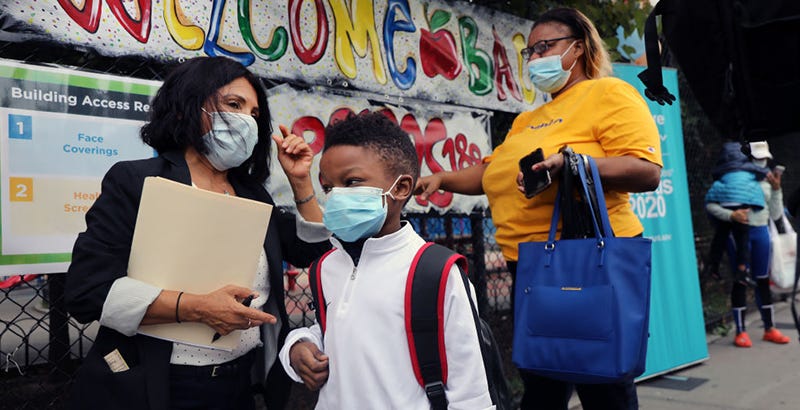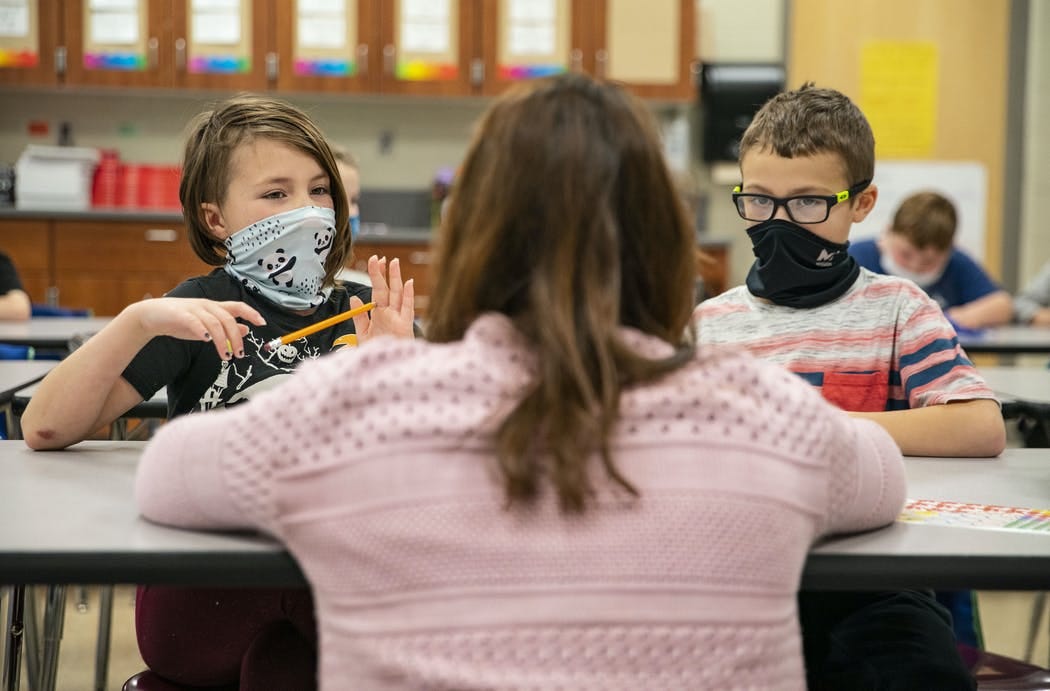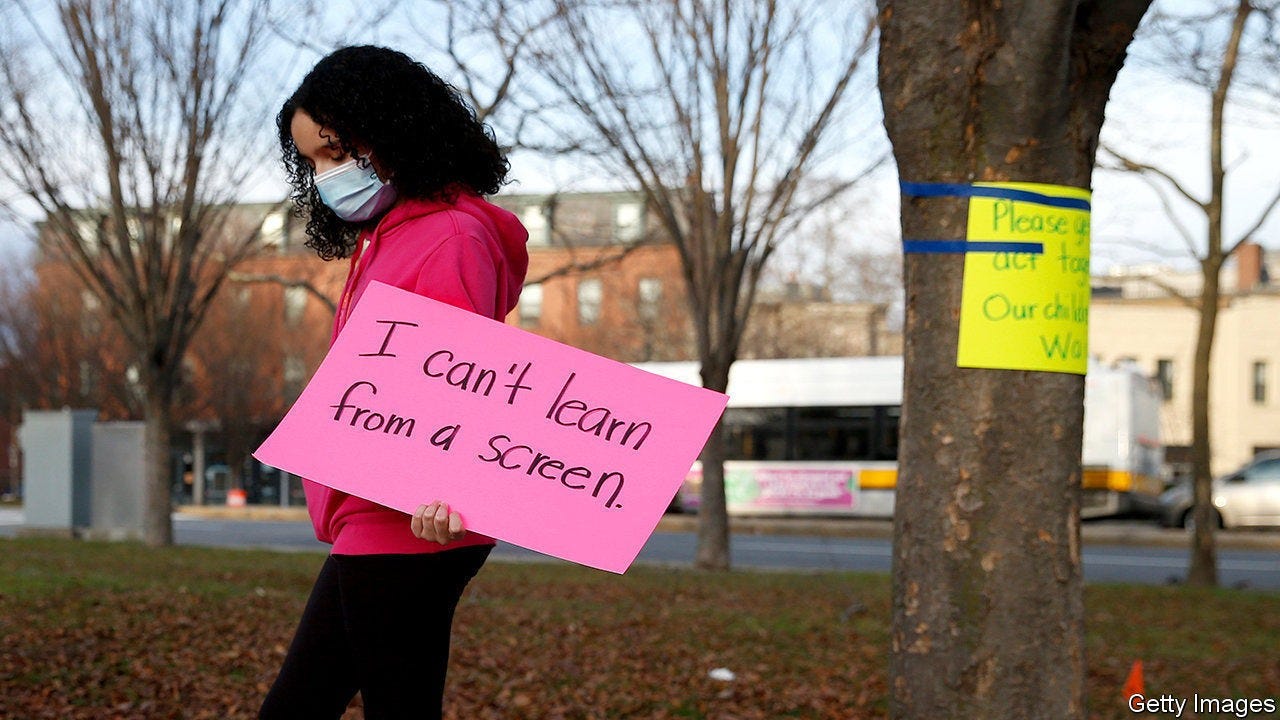This week, as I close out 2020 with my family at home I am feeling more grateful than I ever have in my life. I am thankful for the opportunities that I’ve been afforded this year to serve my community and do it alongside inspiring individuals. I am thankful for the the time I’ve had to learn about how students learn today, to listen to the teaching and learning happening in my own home, and to reflect and recenter on the way that racial equity, humanism, and empathy must come first in our schools — always.
I am energized by the intentionality and compassion of those around me and hope to continue learning from you all into 2021. Cheers to warmer and healthier days ahead in the New Year!
FEDERAL FUNDING AND POLICY
After nearly six months of Americans waiting under distress and two weeks of intense negotiations Congress finalized a $900B aid package on Sunday, December 20th. The package will include $600 direct payments for many Americans, restore amounts for unemployment assistance, and infuse $54B into K12 systems, $23B into higher education, and $10B into the childcare sector. The relief bill will be combined with $1.4T in funding for federal agencies through the end of September. However, one key lever was left out of the agreement: state and local aid and liability protections that were a big deal for democrats.
After nearly six months of Americans waiting under distress and two weeks of intense negotiations Congress finalized a $900B aid package on Sunday, December 20th. #edpolicy #funding #schoolfinance @cmtpitts https://edpolicyhotlist.substack.com/
Breaking down the $900B stimulus package and $1.4T omnibus bill |Politico
Trump signs one-week funding bill to avoid shutdown | The Hill
Bipartisan group to offer 2-part coronavirus relief package | Politico
Congress nears deal on $1.4 trillion government funding measure | Politico
Congress close to coronavirus deal that includes stimulus checks | The Hill
McConnell getting much of what he wants in emerging relief deal | The Hill
Q&A: Sen. Patty Murray on the Next Education Secretary, COVID-19 Relief, and ESSA | Education Week
Two outsiders emerge as top contenders for Biden’s education secretary | WaPo
An Exit Interview With Secretary of Education Betsy DeVos | EdWeek
NATIONAL EDUCATION POLICY
It is not surprising that we are at an inflection point for national education policy. Many leaders are making critical decisions about the paths they will take now and through the coming administration changes. There are some who are establishing priorities around race, ethnicity, and equity in decisions for our youngest learners, families, and budgets this winter. Others are making critical decisions about how to restructure systems for assessment and accountability and what our national advocacy campaigns should include as suggestions are made for the Biden administration. The one certain thing for many of us, including parents, leading local education decisions today is that everything is shifting under our feet. We are looking for something new, fresh, grounded, and consistent to consider as our country works to recover from this pandemic and its impact on our Black, Indigenous, and Latinx communities.
The one certain thing for many of us, including parents, leading local education decisions today is that everything is shifting under our feet. @cmtpitts https://edpolicyhotlist.substack.com/
Why more families need ‘Afterschool’ programs to cope with pressures of pandemic | Desert News
Kids, families, and COVID-19: Pandemic pain points and the urgent need to respond | Annie E. Casey Foundation
With the Virus Surging, Arizona Teachers Protest by Calling In Sick | AZ
Connecticut Gives Every Student a Computer and Home Internet to Close the Digital Divide | CT
Colorado schools missing 29,900 students as pandemic disrupts education | CO
ASSESSMENT AND ACCOUNTABILITY
While we cannot overstate the impact of the global health pandemic and our national crisis on state and local operations, the truth is that education agencies are managing to operate under increasingly complicated circumstances. Some believe that this is not the time to be innovative, however as we transition towards recovery we can rebuild facets of our social services, including education. In order to rethink our schools we must know how students are faring post-COVID, both academically, socially, emotionally, and mentally. At some point, our communities will begin to welcome plans for measurement, data, and assessments again — these will provide information about how to refine our approaches to new types of schooling, recenter our communities, and put students’ lifelong success first.
as we transition towards recovery we can rebuild facets of our social services, including education. In order to rethink our schools we must know how students are faring post-COVID, both academically, socially, emotionally, and mentally. @cmtpitts https://edpolicyhotlist.substack.com/
Poorest Students Avoided COVID Slide on NWEA Tests, Cleveland Data Show | The74
Report: Declines in high school graduates may not be as bad as expected | EdDive
Time to Act 2020 | DQC
REOPENING SCHOOLS
Limited numbers of vaccines are being distributed across the country and states are beginning to release their plans for how to prioritize who gets vaccinated first. Some decisions seem obvious, like vaccinating health care workers, while others are not quite so clear. My husband is a city bus driver and my sister is a teacher, both of them may feel like they they are frontline workers — but they do not get to decide. This past week Massachusetts released their COVID-19 vaccination plan, including educators and staff for a second phase of distribution. The decision to reopen schools may rely on state plans like these.
My husband is a city bus driver and my sister is a teacher, both of them may feel like they they are frontline workers — but they do not get to decide. @cmtpitts https://edpolicyhotlist.substack.com/
Systematic approach to reopening classrooms is well underway | CA
Taking Back Control: a Resetting of America’s Response to Covid-19 | Rockefeller Foundation
Minnesota elementary schools can open January 18 for in-person instruction | MN
TEACHING AND LEARNING
Districts, principals, and teachers are taking a “do no harm” approach to grading, testing, and reporting this year. Many believe this approach will avoid undue consequences for circumstances that are out of the control of our students and families, like access to the internet or devices. In response, researchers, analysts, and evaluators are focusing on the inputs, leading indicators, and opportunities to learn instead. A recent national survey reported that 9 out 10 students’ lack quiet learning spaces at home (92%), access to technology tools (91%), lack of access to high-speed internet (90%), and lack of adult support at home (88%) during their distance learning. Our educators and school leaders will be asked to consider these as critical indicators of students’ engagement this year, however we will be remiss if we fail to maintain integrity to the longterm accountability for which our school systems are held to prepare our Black, Indigenous, and Latinx students for lifelong success.
Districts, principals, and teachers are taking a “do no harm” approach to grading, testing, and reporting this year. Many believe this approach will avoid undue consequences for circumstances that are out of the control of our students @cmtpitts https://edpolicyhotlist.substack.com/
An Open Letter to President-Elect Biden — a Tutoring Marshall Plan to Heal Our Students | The74
Shutting schools has hit poor American children’s learning | The Economist
Remote Learning Is Here to Stay Results from the First American School District Panel Survey | RAND
UPCOMIG EVENTS
Wednesday, January 13 (3-4 PM EST) National Coalition for Technology in Education and Training on A Virtual Convening: Student Learning in Online and Hybrid Environments2
Dr. Christine M. T. Pitts serves as Manager of Research and Evaluation at Portland Public Schools. As an Oregonian, raised by a multicultural family of educators, she brings a decade of progressive strategic leadership experience, a transformative vision, and analytic skill to crafting state education policy. An educator and researcher by training, she has conducted legislation, governance, and policy analyses on a wide array of education issues using social network analysis and mixed methods research. In addition, Dr. Pitts is a facilitative leader who deeply understands and co-constructs local and national partnerships and convening across stakeholder groups. Dr. Pitts currently coordinates between state and national policy leaders to investigate and advocate for policies that prioritize equity in education. Christine lives with her husband and four children in Portland, Oregon. Follow her on Twitter @cmtpitts.










